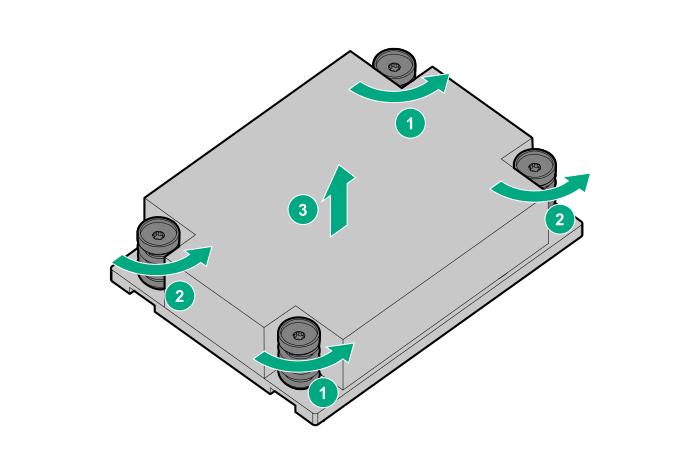Removing a heatsink
Before you perform this procedure, make sure that you have a T-20 Torx screwdriver available.
Procedure
-
Observe the following alerts.
WARNING: To reduce the risk of personal injury from hot surfaces, allow the drives and the internal system components to cool before touching them.CAUTION: THE CONTACTS ARE VERY FRAGILE AND EASILY DAMAGED. To avoid damage to the socket or processor, do not touch the contacts.
- If installed, remove the bezel.
- Power down the server.
-
Remove all power:
- Disconnect each power cord from the power source.
- Disconnect each power cord from the server.
- Do one of the following:
- Remove the access panel.
-
To remove the high-performance heatsink,
remove the air baffle.
CAUTION:
When handling the heatsink, always hold it along the top and bottom of the fins. Holding it from the sides can damage the fins.
- Allow the existing heatsink to cool.
-
Remove the heatsink:
CAUTION:
To prevent mechanical damage or depositing oil on your hands or other contaminant to the heatsink contact surface, hold the heatsink only by the edge of its base plate. Do not touch the heatsink fins.
CAUTION:Heatsink screws must be tightened and loosened in alternating sequence. Do not overtighten the screws as this might damage the system board or the processor socket.
- Use a T-20 Torx screwdriver to loosen the captive screws in the sequence specified on the heatsink label.
- Lift the heatsink away from the system board.

- Place the heatsink on a flat work surface with its contact side facing upward.